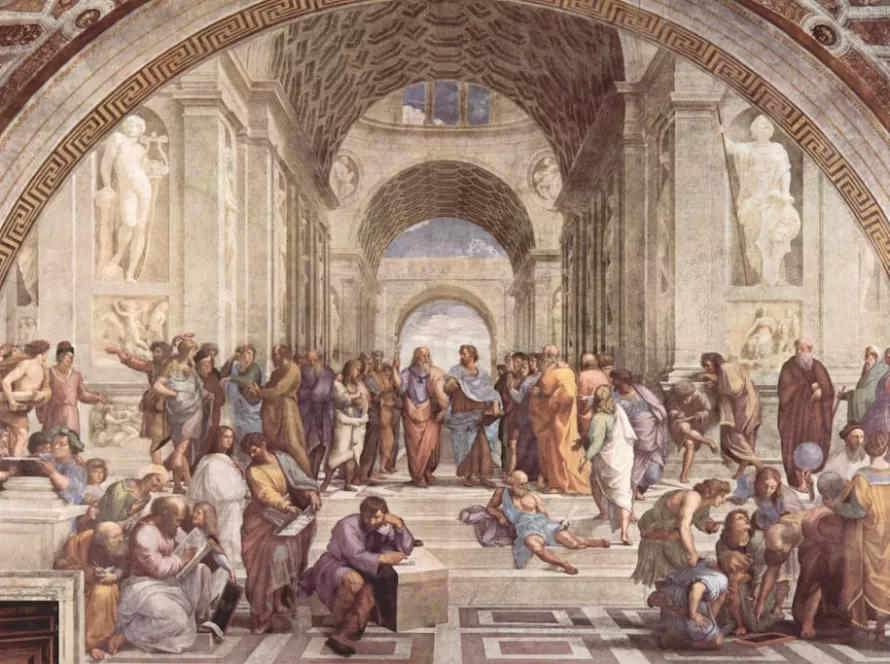Penguin Random House, the literary powerhouse we know today, had humble beginnings as two distinct publishing houses: Penguin Books and Random House. Over the years, these two giants joined forces, paving the way for the birth of Penguin Random House in 2013.
With a rich history of publishing some of the most influential and beloved books in the world, Penguin Random House has become synonymous with literary excellence. Their stable of acclaimed authors includes names like Jane Austen, George Orwell, J.K. Rowling, and Margaret Atwood, to name just a few.
But how did Penguin Random House evolve from a small publisher to the literary giant it is today? This article explores the various milestones and strategic moves that propelled the company to success, from its innovative introduction of affordable paperbacks to its strategic acquisitions and global expansion.
Join us as we delve into the fascinating journey of Penguin Random House, a publishing powerhouse that continues to shape the literary landscape and connect readers with captivating stories.
The early days of Penguin Books and Random House
In the early 20th century, Allen Lane, a young publisher, had a vision to make quality books more accessible to the masses. In 1935, he founded Penguin Books with a mission to publish affordable paperbacks that would appeal to a wide audience. The iconic orange and white covers became a symbol of literary excellence.
Meanwhile, across the Atlantic, Bennett Cerf and Donald Klopfer established Random House in 1927. They too believed in the power of books to shape culture and society. Random House quickly gained a reputation for publishing groundbreaking works of literature, including works by authors such as William Faulkner and James Joyce.
The merger of Penguin and Random House
In 1998, Penguin Books and Random House announced their merger, creating a publishing powerhouse that would dominate the global market. The decision to join forces was driven by a desire to capitalize on the strengths of both companies and expand their reach. The merger brought together Penguin’s expertise in paperback publishing and Random House’s expertise in hardcover publishing, creating a diverse portfolio of books for readers of all tastes.
The impact of digital publishing on Penguin Random House
The rise of digital publishing has revolutionized the book industry, and Penguin Random House has been at the forefront of this transformation. The company recognized the potential of e-books early on and invested heavily in digital technology and infrastructure. By embracing e-books, Penguin Random House was able to reach a wider audience and offer readers new ways to experience literature.
However, the digital revolution also brought new challenges. With the advent of e-readers and online retailers, the traditional publishing model was disrupted. Penguin Random House had to adapt to the changing landscape, finding innovative ways to market and distribute their books in the digital age.
Penguin Random House’s expansion into international markets
While Penguin Random House has always been a global publisher, the merger with Random House provided the opportunity for even greater international expansion. The company established a strong presence in key markets around the world, including the United States, the United Kingdom, Australia, and Canada.
Through strategic partnerships and acquisitions, Penguin Random House has been able to expand its reach into emerging markets such as China and India. By publishing local authors and translating international bestsellers, Penguin Random House has bridged cultural divides and brought diverse voices to readers worldwide.
Penguin Random House’s acquisition of other publishing companies
In addition to organic growth, Penguin Random House has also pursued strategic acquisitions to strengthen its position in the industry. One notable acquisition was the purchase of Viking Press in 1975, which added esteemed authors such as John Updike and Saul Bellow to the company’s roster. Other significant acquisitions include Dial Press, Knopf Doubleday, and Simon & Schuster, further expanding Penguin Random House’s influence and literary offerings.
The role of Penguin Random House in the literary world
Penguin Random House has played a pivotal role in shaping the literary landscape. The company has a history of championing groundbreaking works that challenge societal norms and spark important conversations. From George Orwell’s “1984” to Margaret Atwood’s “The Handmaid’s Tale,” Penguin Random House has consistently published books that provoke thought and inspire change.
The company has also been a platform for emerging voices, nurturing talent, and providing a platform for debut authors. Penguin Random House’s editorial expertise and marketing prowess have helped launch the careers of many celebrated writers, ensuring a constant supply of fresh and compelling stories for readers to enjoy.
Penguin Random House’s commitment to diversity and inclusion
In recent years, Penguin Random House has made a concerted effort to promote diversity and inclusion within the publishing industry. The company has established initiatives to support underrepresented voices and has actively sought out stories that reflect the diverse experiences of readers worldwide.
Through partnerships with organizations such as We Need Diverse Books and the Association of American Publishers’ Diversity, Equity, and Inclusion Committee, Penguin Random House is working to create a more inclusive publishing landscape. By amplifying marginalized voices and engaging in critical conversations, the company is helping to shape a more equitable future for literature.
Challenges faced by Penguin Random House in the modern publishing industry
Despite its success, Penguin Random House faces numerous challenges in the modern publishing industry. The rise of self-publishing platforms and the increasing dominance of online retailers have disrupted the traditional publishing model. Penguin Random House must constantly adapt to changing consumer trends and find new ways to engage readers in a crowded marketplace.
Additionally, the debate around copyright and intellectual property in the digital age poses challenges for the company. Protecting authors’ rights and ensuring fair compensation in an era of easy digital reproduction requires constant vigilance and adaptation.
The future of Penguin Random House
As Penguin Random House looks to the future, it remains committed to its mission of connecting readers with captivating stories. The company continues to invest in innovation and technology, exploring new ways to deliver content and engage with audiences.
In an increasingly interconnected world, Penguin Random House recognizes the importance of literature in fostering empathy, understanding, and dialogue. By continuing to publish diverse voices and championing the power of storytelling, Penguin Random House will undoubtedly shape the literary landscape for years to come.
Penguin Random House’s evolution from a small publisher to a literary giant is a testament to the company’s adaptability, vision, and commitment to excellence. As readers continue to seek out compelling stories, Penguin Random House will be there, providing a platform for authors and captivating readers with the power of words.
—











































































































